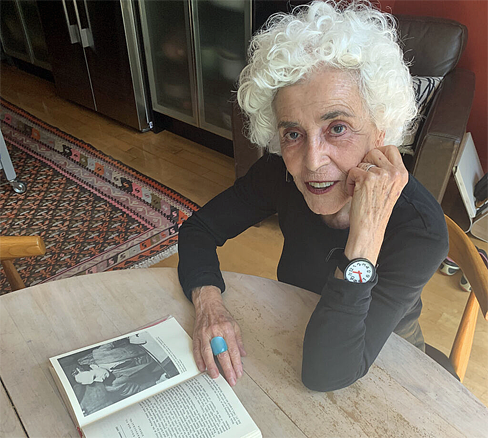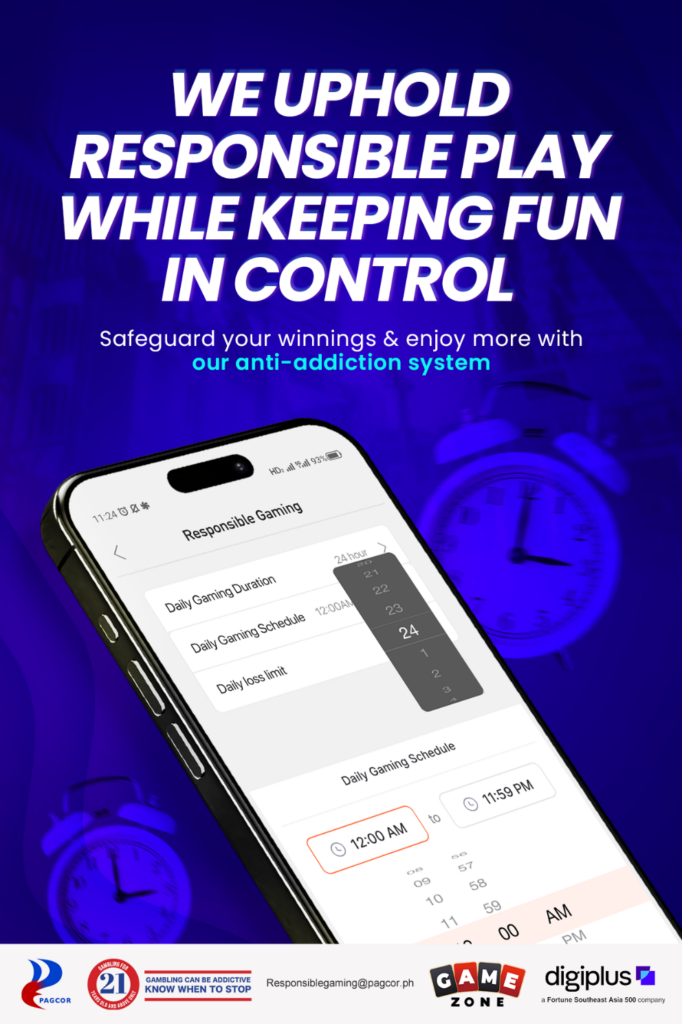Features
Yvonne Singer, a Toronto artist who was saved by Wallenberg as an infant, is still on a voyage of self-discovery

By RON CSILLAG
As an artist herself, Yvonne Singer can well appreciate the esthetic merits of the open-air monument to Swedish Second World War hero Raoul Wallenberg that was unveiled over the summer at Churchill Park in Hamilton, Ont.
Though she had not, as of this writing, personally viewed the installation, dubbed “Be:longings,” Singer spoke admiringly of the 10 bronze-cast suitcases dispersed along a gravel path adjacent to the Hamilton aviary. She knows Simon Frank, one of the project’s three creators, and is aware that suitcases have been a potent symbol of the Holocaust.
“I like the fact that the suitcases are scattered,” Singer, a well-established visual artist and teacher in Toronto, said in an interview over lemon tea in her sun-drenched kitchen. “I think the imagery and symbolism are very effective in conveying the idea of displacement and emigration.” The old-timey valises evoke not just Wallenberg, Singer noted, but all victims and survivors of that terror-stricken era.
The outdoor project is also “minimal, which I like. I don’t like public sculptures that scream at you or are clichéd.”
Singer connects to the installation on a whole other level. The 78-year-old resident of Toronto’s Cabbagetown neighbourhood is Wallenberg’s goddaughter. She was born on his bed.
It’s a Hollywood-worthy tale that evolved over time, in a series of eye-popping twists, turns and coincidences—all amid Singer’s own personal voyage of self-discovery.
The backstory is its own blockbuster: The non-Jewish scion of a wealthy Swedish industrial and banking family, Wallenberg, then just 32, was recruited by the U.S. War Refugee Board and dispatched to Budapest to assist and rescue as many Jews in the Nazi-occupied Hungarian capital as possible. He arrived in July 1944, just as the Nazis had shipped some 440,000 Jews from the countryside to Auschwitz. They now set their sights on the Jews of Budapest.
Accorded diplomatic status, Wallenberg famously set off on a frenetic pace. He designed, printed and distributed thousands of the famous “Schutzpass”—an official-looking document that placed the holder under the protection of the neutral Swedish Crown. He also scoured the city for buildings to rent, finding 32, and crammed in as many souls as possible. The “safe houses” flew the yellow-and-blue Swedish flag and were declared protected by diplomatic immunity.
Known for his bluster and bravado, his greatest coup came when he persuaded Nazi commanders to call off the liquidation of Budapest’s Jewish ghetto, with its 70,000 inhabitants. The number of Jews Wallenberg is said to have rescued peaks at 100,000. In any event, he is credited with saving more Jewish lives during the war than any single government.
By January 1945, the Red Army was laying siege to Budapest, and Wallenberg was taken into custody, supposedly on suspicion of being a U.S. spy. He promptly vanished into the gulag. A Soviet report in 1956 stated he had died in July 1947 of a heart attack in Moscow’s notorious Lubyanka prison, but supposed eyewitness sightings and stories of contact with him from former inmates continued well into the 1970s.
In 2012, the diaries of a former head of the KGB, discovered in the walls of his Moscow home, stated there was “no doubt” that Wallenberg was “liquidated” in 1947.
But back to Singer.
On the night of Nov. 3, 1944, a desperate Tibor Vandor, who worked for Wallenberg as a courier and liaison to the underground, needed help for his wife, Agnes. She was in labour and had been turned away from Budapest’s hospitals, which barred Jews. Wallenberg allowed the couple to use his own room, while he slept in the corridor.
The next morning, he was called in to see a newborn girl. Asked by the grateful parents to name her, Wallenberg chose Nina Maria Ava (Nina was his half-sister’s name, Maria his mother’s). The couple changed the first name to Yvonne, and Wallenberg agreed to be the child’s godfather.
Singer knew nothing of this until she was 34 years old.
It was October 1979 when she read an article, reprinted from a U.S. newspaper, in the Toronto Star about Wallenberg’s plight. The story included a reference to Singer’s unusual birth taken from a Hungarian book on the Swedish hero written after the war. The baby with the Toronto connection, the parents, the godfather—were all there, mentioned by name.
When she read the piece, “I burst out crying,” she told the Star after contacting the paper. Her story spilled forth a week later in a large Saturday Star article headlined “Swedish hero saved my life: Metro woman.”
Singer is still struck by “the incredible coincidence of it all. Here I am in Toronto in 1979, reading the paper… it boggles the mind. I could have easily gone through life not knowing the story. Suddenly, I had a connection to this man, who sounds like he was fascinating.”
Her parents had not told her the story. And there was another missing piece of the puzzle: their Jewishness.
At war’s end, the Vandors went to Switzerland and Holland before settling in Montreal in 1949, where the parents shed their Jewish identities, doubtless seeking to forget. Tibor Vandor even became an elder in the United Church.
“I always pressed them for more information, and they always refused,” even following the revelations in the Toronto Star, Singer recalled. “They told me very, very little.” Her parents never revealed being Jews. Their silence encompassed “anything to do with the war. They were just not forthcoming.”
Singer graduated from McGill University and went on to teach English and French at local high schools. She converted to Judaism to marry her husband, Ron Singer, a theatre director and educator, in 1966. A few years later, a cousin in England recalled being a flower-girl at Yvonne’s parents’ wedding, which she said took place in a synagogue. The parents denied it but their daughter believed it.
Singer’s feelings of alienation as an immigrant child would evaporate on discovering that she had been born Jewish, whether the knowledge came from a cousin or the Toronto Star. “I felt like I’d come home, part of a history that goes back thousands of years. I no longer felt rootless.”
The Singers moved to Toronto in 1971, where Yvonne later began a prolific art career in various media and teaching visual arts at York University. Raising three daughters and a busy life meant there was little time to get involved in the Wallenberg file (though she was pleased when he became Canada’s first Honorary Citizen in 1985 and when Canada Post issued a stamp commemorating Wallenberg a decade ago).
It’s little surprise that Singer’s art has explored themes of identity, history and memory. The outsider status she felt in her early life “is what made me think about ways of expressing that, either through language or visual imagery. So you go to what you know when you’re an artist.”
In 2016, the Swedish government declared Wallenberg officially dead, but to Singer, that offered no finality. “From what I learned, the Swedish government is not exempt from blame for trying to get Wallenberg out. I cannot reconcile the fact that [Wallenberg’s family] could not exert any kind of leverage over the Russians to find out what happened to him.”
In Judaism, being a godparent carries little or no religious obligation. Singer considers the godfather connection to Wallenberg an honour, “but I’m also very sad that I never met him. I think he would have been a fascinating person to talk to. The story is just very, very tragic.”
The grandmother of nine sighed. Over the decades, the story for her was obviously very personal, “and I was still processing it. Maybe I’m still processing it, for a long, long time.”
A version of this article originally appeared in the Hamilton Jewish News. It is reprinted with the author’s permission.
Features
So, what’s the deal with the honey scene in ‘Marty Supreme?’

By Olivia Haynie December 29, 2025 This story was originally published in the Forward. Click here to get the Forward’s free email newsletters delivered to your inbox.
There are a lot of jarring scenes in Marty Supreme, Josh Safdie’s movie about a young Jew in the 1950s willing to do anything to secure his spot in table tennis history. There’s the one where Marty (Timothée Chalamet) gets spanked with a ping-pong paddle; there’s the one where a gas station explodes. And the one where Marty, naked in a bathtub, falls through the floor of a cheap motel. But the one that everybody online seems to be talking about is a flashback of an Auschwitz story told by Marty’s friend and fellow ping-ponger Béla Kletzki (Géza Röhrig, best known for his role as a Sonderkommando in Son of Saul).
Kletzki tells the unsympathetic ink tycoon Milton Rockwell (Kevin O’Leary) about how the Nazis, impressed by his table tennis skills, spared his life and recruited him to disarm bombs. One day, while grappling with a bomb in the woods, Kletzki stumbled across a honeycomb. He smeared the honey across his body and returned to the camp, where he let his fellow prisoners lick it off his body. The scene is a sensory nightmare, primarily shot in close-ups of wet tongues licking sticky honey off Kletzki’s hairy body. For some, it was also … funny?
Many have reported that the scene has been triggering a lot of laughter in their theaters. My audience in Wilmington, North Carolina, certainly had a good chuckle — with the exception of my mother, who instantly started sobbing. I sat in stunned silence, unsure at first what to make of the sharp turn the film had suddenly taken. One post on X that got nearly 6,000 likes admonished Safdie for his “insane Holocaust joke.” Many users replied that the scene was in no way meant to be funny, with one even calling it “the most sincere scene in the whole movie.”
For me, the scene shows the sheer desperation of those in the concentration camps, as well as the self-sacrifice that was essential to survival. And yet many have interpreted it as merely shock humor.
Laughter could be understood as an inevitable reaction to discomfort and shock at a scene that feels so out of place in what has, up to that point, been a pretty comedic film. The story is sandwiched between Marty’s humorous attempts to embarrass Rockwell and seduce his wife. Viewers may have mistaken the scene as a joke since the film’s opening credits sequence of sperm swimming through fallopian tubes gives the impression you will be watching a comedy interspersed with some tense ping-pong playing.
The reaction could also be part of what some in the movie theater industry are calling the “laugh epidemic.” In The New York Times, Marie Solis explored the inappropriate laughter in movie theaters that seems to be increasingly common. The rise of meme culture and the dissolution of clear genres (Marty Supreme could be categorized as somewhere between drama and comedy), she writes, have primed audiences to laugh at moments that may not have been meant to be funny.
The audience’s inability to process the honey scene as sincere may also be a sign of a society that has become more disconnected from the traumas of the past. It would not be the first time that people, unable to comprehend the horrors of the Holocaust, have instead derided the tales of abuse as pure fiction. But Kletzki’s story is based on the real experiences of Alojzy Ehrlich, a ping-pong player imprisoned at Auschwitz. The scene is not supposed to be humorous trauma porn — Safdie has called it a “beautiful story” about the “camaraderie” found within the camps. It also serves as an important reminder of all that Marty is fighting for.
The events of the film take place only seven years after the Holocaust, and the macabre honey imagery encapsulates the dehumanization the Jews experienced. Marty is motivated not just by a desire to prove himself as an athlete and rise above what his uncle and mother expect of him, but above what the world expects of him as a Jew. His drive to reclaim Jewish pride is further underscored when he brings back a piece of an Egyptian pyramid to his mother, telling her, “We built this.”
Without understanding this background, the honey scene will come off as out of place and ridiculous. And the lengths Marty is willing to go to to make something of himself cannot be fully appreciated. The film’s description on the review-app Letterboxd says Marty Supreme is about one man who “goes to hell and back in pursuit of greatness.” But behind Marty is the story of a whole people who have gone through hell; they too are trying to find their way back.
Olivia Haynie is an editorial fellow at the Forward.
This story was originally published on the Forward.
Features
Paghahambing ng One-on-One Matches at Multiplayer Challenges sa Pusoy in English

Ang Pusoy, na kilala din bilang Chinese Poker, ay patuloy na sumisikat sa buong mundo, kumukuha ng interes ng mga manlalaro mula sa iba’t ibang bansa. Ang mga online platforms ay nagpapadali sa pag-access nito. Ang online version nito ay lubos na nagpasigla ng interes sa mga baguhan at casual players, na nagdulot ng diskusyon kung alin ang mas madali: ang paglalaro ng Pusoy one-on-one o sa multiplayer settings.
Habang nailipat sa digital platforms ang Pusoy, napakahalaga na maunawaan ang mga format nito upang mapahusay ang karanasan sa laro. Malaking epekto ang bilang ng mga kalaban pagdating sa istilo ng laro, antas ng kahirapan, at ang ganap na gameplay dynamics. Ang mga platforms tulad ng GameZone ay nagbibigay ng angkop na espasyo para sa mga manlalaro na masubukan ang parehong one-on-one at multiplayer Pusoy, na akma para sa iba’t ibang klase ng players depende sa kanilang kasanayan at kagustuhan.
Mga Bentahe ng One-on-One Pusoy
Simpleng Gameplay
Sa one-on-one Pusoy in English, dalawa lang ang naglalaban—isang manlalaro at isang kalaban. Dahil dito, mas madali ang bawat laban. Ang pokus ng mga manlalaro ay nakatuon lamang sa kanilang sariling 13 cards at sa mga galaw ng kalaban, kaya’t nababawasan ang pagiging komplikado.
Para sa mga baguhan, ideal ang one-on-one matches upang:
- Sanayin ang tamang pagsasaayos ng cards.
- Matutunan ang tamang ranggo ng bawat kamay.
- Magsanay na maiwasan ang mag-foul sa laro.
Ang simpleng gameplay ay nagbibigay ng matibay na pundasyon para sa mas kumplikadong karanasan sa multiplayer matches.
Mga Estratehiya mula sa Pagmamasid
Sa one-on-one matches, mas madaling maunawaan ang istilo ng kalaban dahil limitado lamang ang galaw na kailangan sundan. Maaari mong obserbahan ang mga sumusunod na patterns:
- Konserbatibong pagkakaayos o agresibong strategy.
- Madalas na pagkakamali o overconfidence.
- Labis na pagtuon sa isang grupo ng cards.
Dahil dito, nagkakaroon ng pagkakataon ang mga manlalaro na isaayos ang kanilang estratehiya upang mas epektibong maka-responde sa galaw ng kalaban, partikular kung maglalaro sa competitive platforms tulad ng GameZone.
Mas Mababang Pressure
Dahil one-on-one lamang ang laban, mababawasan ang mental at emotional stress. Walang ibang kalaban na makaka-distract, na nagbibigay ng pagkakataon para sa mga baguhan na matuto nang walang matinding parusa sa kanilang mga pagkakamali. Nagiging stepping stone ito patungo sa mas dynamic na multiplayer matches.
Ang Hamon ng Multiplayer Pusoy
Mas Komplikado at Mas Malalim na Gameplay
Sa Multiplayer Pusoy, madaragdagan ang bilang ng kalaban, kaya mas nagiging komplikado ang laro. Kailangan kalkulahin ng bawat manlalaro ang galaw ng maraming tao at ang pagkakaayos nila ng cards.
Ang ilang hamon ng multiplayer ay:
- Pagbabalanse ng lakas ng cards sa tatlong grupo.
- Pag-iwas sa labis na peligro habang nagiging kompetitibo.
- Pagtatagumpayan ang lahat ng kalaban nang sabay-sabay.
Ang ganitong klase ng gameplay ay nangangailangan ng maingat na pagpaplano, prediksyon, at strategic na pasensiya.
Mas Malakas na Mental Pressure
Mas mataas ang psychological demand sa multiplayer, dahil mabilis ang galawan at mas mahirap manatiling kalmado sa gitna ng mas maraming kalaban. Kabilang dito ang:
- Bilisan ang pagdedesisyon kahit under pressure.
- Paano mananatiling focused sa gitna ng mga distractions.
- Pagkakaroon ng emosyonal na kontrol matapos ang sunod-sunod na talo.
Mas exciting ito para sa mga manlalarong gusto ng matinding hamon at pagmamalasakit sa estratehiya.
GameZone: Ang Bagong Tahanan ng Modern Pusoy

Ang GameZone online ay isang kahanga-hangang platform para sa mga naglalaro ng Pusoy in English. Nagbibigay ito ng opsyon para sa parehong one-on-one at multiplayer matches, akma para sa kahit anong antas ng kasanayan.
Mga feature ng GameZone:
- Madaling English interface para sa user-friendly na gameplay.
- Real-player matches imbes na kalaban ay bots.
- Mga tool para sa responsible play, tulad ng time reminder at spending limits.
Pagtatagal ng Pamanang Pusoy
Ang Pusoy card game in English ay nagpalawak ng abot nito sa mas maraming players mula sa iba’t ibang bahagi ng mundo habang pinapanatili ang tradisyunal nitong charm. Sa pamamagitan ng mga modernong platform tulad ng GameZone, mananatiling buhay at progresibo ang Pusoy, nakakabighani pa rin sa lahat ng antas ng manlalaro—mula sa casual enjoyment hanggang sa competitive challenges.
Mula sa maingat na pag-aayos ng mga cards hanggang sa pag-master ng estratehiya, ang Pusoy ay isang laro na nananatiling relevant habang ipinapakita ang masalimuot nitong gameplay dynamics na puno ng kultura at inobasyon.
Features
Rob Reiner asked the big questions. His death leaves us searching for answers.

Can men and women just be friends? Can you be in the revenge business too long? Why don’t you just make 10 louder and have that be the top number on your amp?
All are questions Rob Reiner sought to answer. In the wake of his and his wife’s unexpected deaths, which are being investigated as homicides, it’s hard not to reel with questions of our own: How could someone so beloved come to such a senseless end? How can we account for such a staggering loss to the culture when it came so prematurely? How can we juggle that grief and our horror over the violent murder of Jews at an Australian beach, gathered to celebrate the first night of Hanukkah, and still light candles of our own?
The act of asking may be a way forward, just as Rob Reiner first emerged from sitcom stardom by making inquiries.
In This is Spinal Tap, his first feature, he played the role of Marty DiBergi, the in-universe director of the documentary about the misbegotten 1982 U.S. concert tour of the eponymous metal band. He was, in a sense, culminating the work of his father, Carl Reiner, who launched a classic comedy record as the interviewer of Mel Brooks’ 2,000 Year Old Man. DiBergi as played by Reiner was a reverential interlocutor — one might say a fanboy — but he did take time to query Nigel Tufnell as to why his amp went to 11. And, quoting a bad review, he asked “What day did the Lord create Spinal Tap, and couldn’t he have rested on that day too?”
But Reiner had larger questions to mull over. And in this capacity — not just his iconic scene at Katz’s Deli in When Harry Met Sally or the goblin Yiddishkeit of Miracle Max in The Princess Bride — he was a fundamentally Jewish director.
Stand By Me is a poignant meditation on death through the eyes of childhood — it asks what we remember and how those early experiences shape us. The Princess Bride is a storybook consideration of love — it wonders at the price of seeking or avenging it at all costs. A Few Good Men is a trenchant, cynical-for-Aaron Sorkin, inquest of abuse in the military — how can it happen in an atmosphere of discipline.
In his public life, Reiner was an activist. He asked how he could end cigarette smoking. He asked why gay couples couldn’t marry like straight ones. He asked what Russia may have had on President Trump. This fall, with the FCC’s crackdown on Jimmy Kimmel, he asked if he would soon be censored. He led with the Jewish question of how the world might be repaired.
Guttingly, in perhaps his most personal project, 2015’s Being Charlie, co-written by his son Nick he wondered how a parent can help a child struggling with addiction. (Nick was questioned by the LAPD concerning his parents’ deaths and was placed under arrest.)
Related
None of the questions had pat answers. Taken together, there’s scarcely a part of life that Reiner’s filmography overlooked, including the best way to end it, in 2007’s The Bucket List.
Judging by the longevity of his parents, both of whom lived into their 90s, it’s entirely possible Reiner had much more to ask of the world. That we won’t get to see another film by him, or spot him on the news weighing in on the latest democratic aberration, is hard to swallow.
Yet there is some small comfort in the note Reiner went out on. In October, he unveiled Spinal Tap II: The Beginning of the End, a valedictory moment in a long and celebrated career.
Reiner once again returned to the role of DiBergi. I saw a special prescreening with a live Q&A after the film. It was the day Charlie Kirk was assassinated. I half-expected Reiner to break character and address political violence — his previous film, God & Country, was a documentary on Christian Nationalism.
But Reiner never showed up — only Marty DiBergi, sitting with Nigel Tuffnell (Christopher Guest), David St. Hubbins (Michael McKean) and Derek Smalls (Harry Shearer) at Grauman’s Chinese Theater in Los Angeles. The interview was broadcast to theaters across the country, with viewer-submitted questions like “What, in fact, did the glove from Smell the Glove smell like?” (Minty.) And “Who was the inspiration for ‘Big Bottom?’” (Della Reese.)
Related
- Actor-Director Rob Reiner dies at 78
- Carl Reiner On Judaism, Atheism And The ‘Monster’ In The White House
- Mandy Patinkin On His Favorite ‘Princess Bride’ Quote
DiBergi had one question for the audience: “How did you feel about the film?”
The applause was rapturous, but DiBergi still couldn’t get over Nigel Tuffnell’s Marshall amp, which now stretched beyond 11 and into infinity.
“How can that be?” he asked. “How can you go to infinity? How loud is that?”
There’s no limit, Tuffnell assured him. “Why should there be a limit?”
Reiner, an artist of boundless curiosity and humanity, was limitless. His remit was to reason why. He’ll be impossible to replace, but in asking difficult questions, we can honor him.
The post Rob Reiner asked the big questions. His death leaves us searching for answers. appeared first on The Forward.

